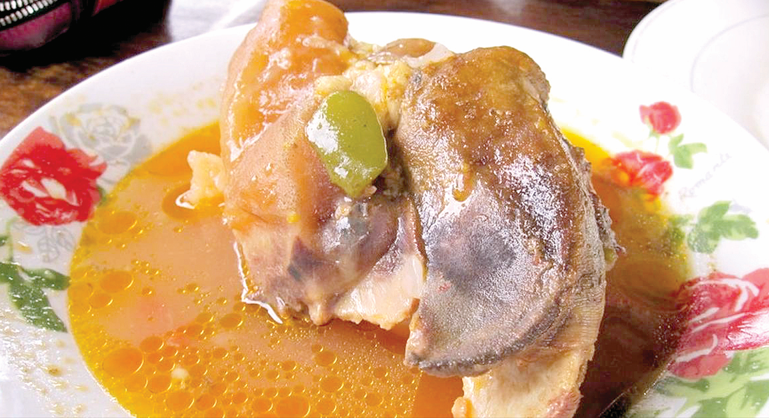Why Kenyans can’t get enough of cow hooves, chicken legs
By People.Reporter, November 21, 2022As the cost of living continues to skyrocket within and without the country, Kenyans in major urban areas such as Nairobi, Kiambu, Nakuru and Naivasha, are coming up with new ways to ensure they have something to accompany their daily meals. They say a man must live, no matter what.
In recent months, Kenyans, especially those in Nairobi have developed an unwavering liking for lower parts of animals, as their main delicacies, largely shifting some of the popular menus in most Nairobi backstreets.
The recent shift in delicacies has crept into both the lower and middle class. Those operating butcheries and slaughterhouses have seen an increased demand for hooves of cows, cow trotters, chicken legs, and legs of animals such as sheep, goats and cow udder, among others. Some have developed a liking for the inner parts of the hides and skins, a development that has kept sellers on their toes, trying to satisfy the growing demand.
Every afternoon and evening, while moving around the streets of Nairobi, you will not help, but notice businessmen and women selling roasted or raw chicken legs and cow udders.
Some will be busy preparing soup from the hooves and legs of various animals with a pool of customers, each wanting to have a taste of whatever is prepared.
“Chicken legs and necks sell like hotcakes. I never have enough suppliers. The reason is that they are way cheaper as compared to buying a whole chicken. A whole chicken ranges from Sh600. One chicken leg goes for between Sh10 and Sh20. One would rather have two chicken legs and have them cooked together with sukuma wiki than go for the whole chicken, which is expensive,” says Immaculate Kanini, a vendor at Allsopps, along Outering Road.
Not far from where Kanini operates is Jack wa Mutura. He got the name from his popularity in the expertise of preparing delicious animal intestines (African sausage) for his customers.
Jack has since expanded his small business to include the preparation of hooves soup and crushed cow udder. “Women are my main customers.
They love buying the softer parts of cooked hooves and their soup… Well, it is cheap as compared to buying meat and is more nutritious,” Jack says.
Burma Market is perhaps one of the largest meat markets in Nairobi. It is one of the few places within the city where butchers buy meat in bulk to sell in other parts of the country on retail. The market operates 24 hours. Sellers have noticed a recent surge in demand for lower parts of the animals.
A businessmen at the market, Kimani, says cow liver was the real gold back then. Individuals and groups would book for liver sometimes weeks ahead of time. Even with the booking, one was never guaranteed of getting.
“But of late, people are buying hooves en masse. For those selling chicken, legs and necks are not seeing the light of day. Sometimes people fight for them. We are thinking of increasing the price to control the situation,” Kimani says.
As the demand for the lower parts of animals continues, majorly because they are more affordable, it seems businessmen and women will have to relook at their business models to accommodate the growing demand. New markets for the delicacies are emerging in Kibera, Githurai 45, Muthurwa Market and Kiambu.
More Articles

